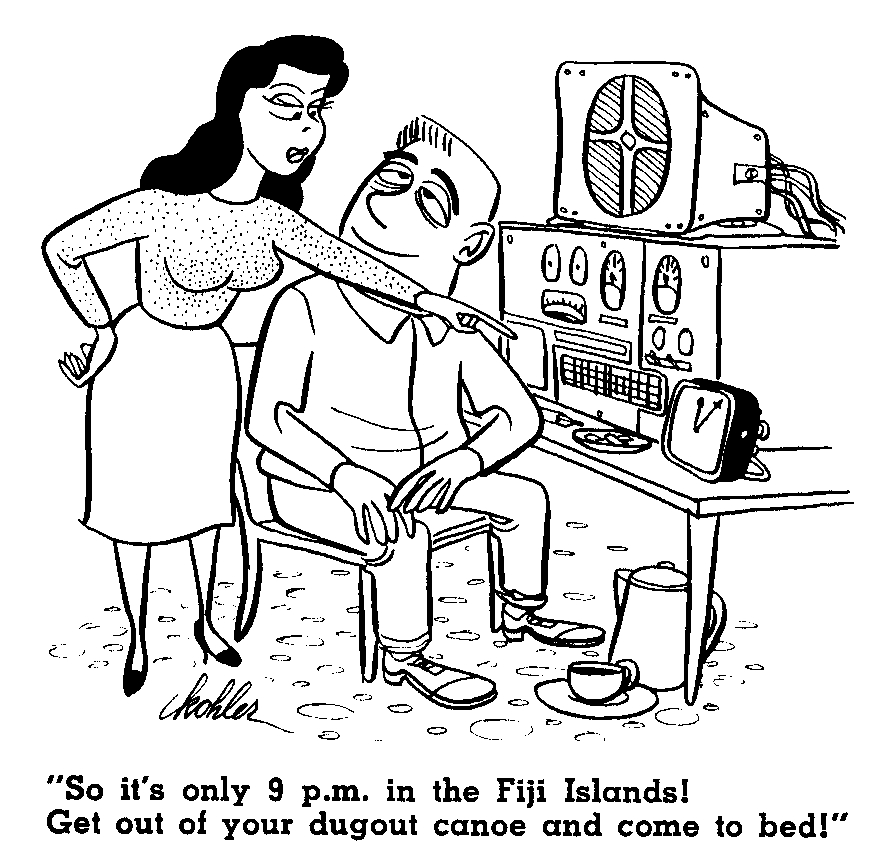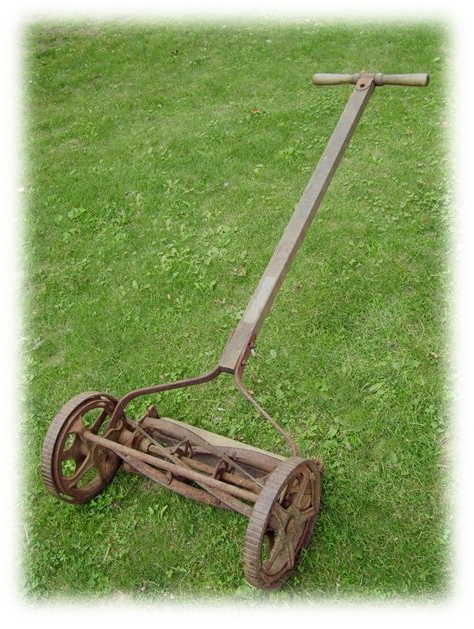
Source: Better Shortwave Reception, William I. Orr, W6SAI,
Radio Publications Inc., Wilton, CT, 1st Edition, p. 129, 1957.
A Radio is Cheap Entertainment
Digressions of Bob Colegrove
Radio is a cheap hobby. Consider the plight of concertgoers and sports fans. Today, the price of a ticket to a single event can easily equal or exceed the cost of a decent radio. Then, after the event, all you have left is a ticket stub and a memory. Further, if your team loses, the memory is probably not pleasant. Whereas, with a radio, you have a tangible item you can go on using as long as you want to. Perhaps by dividing some measure of enjoyment by the time engaged in the activity one could come up with a quotient indicating the relative value of various forms of entertainment.
I guess my point is an attempt to justify why I have more than the necessary number of radios. After all, it’s hard to listen to more than one at a time. But it’s also hard to put a number on ‘necessary,’ and besides, radios are cheap. It wasn’t always that way. In 1959, the entry-level shortwave “sets” were the five-tube Hallicrafters S-38E and the National NC-60 Special. These radios were marketed head-to-head at the $60 price point. To put things in perspective, that’s nearly $650 today. Conversely, a highly desirable Tecsun S-2200x (price, $372) with countless transistors would have cost less than $35 in 1959 dollars had it been feasible. An XHDATA D-220 (price, $10) would have been 92 cents.
I financed my purchase of a Hallicrafters S-38E using the device shown below. For those too young to recognize it, it was what passed for a lawn mower in 1959. It was very ecofriendly requiring neither gasoline nor battery charging. Instead, the short blade rotated, and the device moved forward on two metal wheels by manual exertion of pressure on the handle, which is shown at the top right. You had to overlap each pass across the lawn by at least ½ a blade width to get a decent cut. I had a clientele of three neighbor’s yards, each of approximately 1/6 acre for which I received $2 per mowing – $1 for the front and $1 for the back. There was no sales tax in Indiana at that time, and my earnings were under the minimum amount to pay any income tax, so you can do the math to see how long it took to buy my radio.
 Fast forward 65 years. My neighbor’s boy rides on a 48-inch $3,200 mower with a cold soda in the cup holder; streams rock music on his noise-canceling, Bluetooth headphones; and knocks down $60 in about ½ hour. Radio? He thinks single sideband was a heavy metal group from Chicago.
Fast forward 65 years. My neighbor’s boy rides on a 48-inch $3,200 mower with a cold soda in the cup holder; streams rock music on his noise-canceling, Bluetooth headphones; and knocks down $60 in about ½ hour. Radio? He thinks single sideband was a heavy metal group from Chicago.
Outside of an occasional set of batteries, there is very little continuing ownership cost for a radio beyond the initial investment. There is no monthly fee for Internet streaming or satellite radio. Whatever you care to donate to your local public radio station is your own business.
All of this is to say I have gone to some concerts and sporting events, but a fair share of my disposable income in recent years has been spent on radios, some of which, like entertainment events, are now just memories. The remaining radios festooning the shack are all necessary.
Bottom line: If your conscience is troubled by the prospect of spending money on a spare radio, or you are consumed with guilt at having done so, reassure yourself by considering what little would remain after any investment in a good meal at a decent restaurant. Just remember, for the sake of domestic tranquility, use discretion when sharing any plans with your spouse. In this situation, I often reflect on words attributed to the late Rear Admiral Grace Hopper, USN who used to say, “It’s easier to ask for forgiveness than permission.”
May your radio logbooks be enriched with many new entries in 2025.
Happy New Year!

I love this cartoon!
🙂
Awesome article, Bob. I am 72 yo and also relate to the lawn mower. My entry radio was SONY TR1000 an analogue beauty. It was very sensitive and selective. I did manage to verify my first 100 stations by this radio before acquiring digital SONY ICF2001D.
Great article Bob. I’m a 73 yo in Adelaide, Australia. It’s amazing how the same things apply all over the world. I also used the same lawn mower here as a kid. and have had various radios enter the house by neferious means, all long ago of course! A couple of years back a Sony CRF 320 entered the house, can you imagine the degree of difficulty there! Now, let’s check out all these dresses?! ?
My first “ serious” radio was in high school from Western Germany. . It was the Nordmende Galaxy 7000 (1975) , but after 2 months of continuous use, it blew 3 transistors, and it really wasn’t that sensitive nor selective. The present day radios are much better, than the radios from that era…
the other day, a news story on tv noted that a standing room ticket to a college bowl game now costs $347 dollars, did,nt mention how much for a seat to a college bowl game would cost, go figure.
My entry radio was a S38C. Paper route and theater ushering (which included marque changing during snow storms) paid for it.
Bob,
You digression is inspiring! And right on point!
Here’s another little useful omission:
“Oh, that? I got that a while back!” Nebulous, truthful (if a bit sneaky), and likely to be cast into the framework of “Arrgh! You and your radios!”
Cheers! Robert
Wow, Bob, what great fun!
I look forward with great anticipation to further digressions from you.
Pat McManus, the superb humorist and sporting writer, once said that the key to domestic tranquility was to accustom the better half to the concept of “all those fishing rods.” See, it is NOT a specific number; it’s nebulous, unquantifiable, a number that floats somewhere between not-zero and infinity.
Perhaps the same concept could be applied to radios . . . you simply have “all those radios.” No?
Cheers, Jock
Cheers, Jock